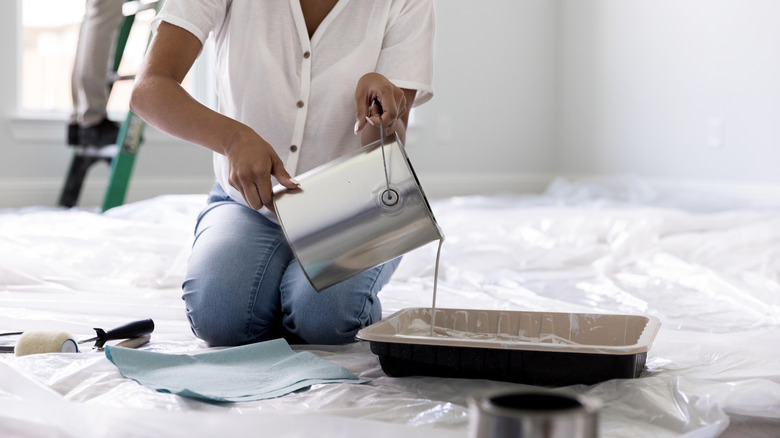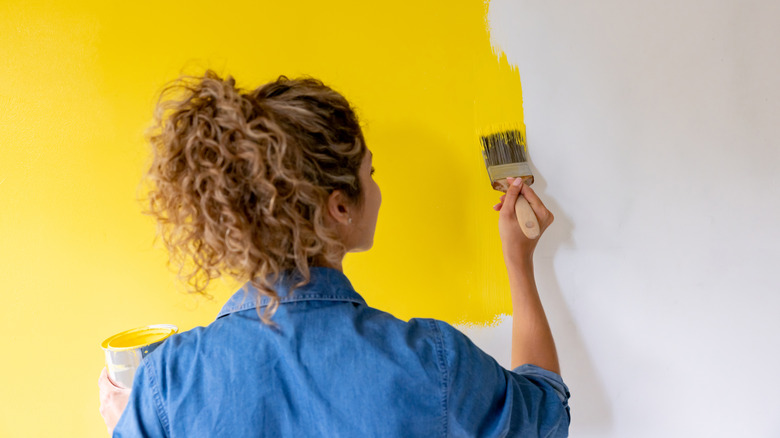Here's What Happens To Your Walls If You Use Expired Paint
Painting your home already requires plenty of preparation and technique to ensure you'll be able to create a smooth and mess-free final product, but, unfortunately, there's another common painting mistake you have to address if you're cracking into an old can to touch up or refresh your wall color.
Paint can actually expire over time, even when properly sealed, so if you have cans that have been sitting in your garage for years, you might want to think twice before reopening them.
Thankfully, expired paint isn't as big of a deal as something like expired food, and it doesn't go bad overnight, but it can still have negative impacts on your results, from uneven color to flecks of already-dry pigment that cause unsightly texture. Because of this, it's a good idea to know if your already-opened paint has expired and whether or not it's worth it to attempt to revive it for use on your walls.
How to tell if your paint is expired
Paint lasts for different amounts of time depending on the type. Acrylic paint has the longest life span in proper storage at two to 15 years, latex paint lasts for two to 10, chalk paint for one to five, and milk paint, pre-mixed in the can, for about one to two years. These time ranges are obviously fairly wide, but they can act as a solid guide if you want a better idea of how your paint might be doing without having to crack open the can. It's safe to say that if something has been sitting in the garage for two decades, it's out of commission.
When you open your can of paint, there are a few signs that it has gone bad that you can look out for. If it's chunky, rancid-smelling, or ultra-thick, it's probably well past its peak, and you're better off tossing it.
If it's only separated, there's still hope that it can be revived, but it might be a good idea to bring it to a professional to have it machine-mixed rather than attempting to redistribute the pigment yourself.
What expired paint means for your final product
If all you need to do is cover a hole from a nail or touch up a scuff, expired paint can do the job, but don't expect fantastic results. If it smells bad, bypass using the paint entirely — that smell is bacterial growth that will likely persist once it's on the wall. Small flecks or a thicker consistency, however, can be ignored for quick jobs if you're not a perfectionist. These pieces of texture will likely translate to your wall after they dry down, but it's not the end of the world.
If you're planning to paint an entire room or a larger swath of your wall, these small flaws can add up. In this situation, it's best to bite the bullet and buy a replacement can. If you can't find your exact color or it isn't available anymore, bring in a sample of the expired paint to be color matched. The final result might not be perfect, but it will be much easier on the eyes than a wall full of lumps, bumps, and brush strokes.


